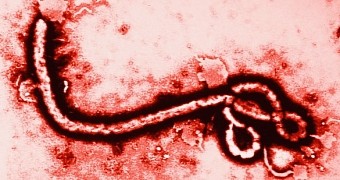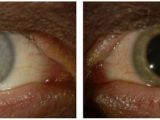The latest Ebola epidemic to plague West Africa began in December 2013. As of April 26, 2015, the World Health Organization had documented a total of 26,312 cases of infection, of which 10,899 resulted in death.
Among the people who contracted Ebola was 43-year-old Ian Crozier, an infectious disease specialist who was exposed to the deadly virus while helping contain the outbreak in Sierra Leone.
Having tested positive for Ebola, the man was transferred to the Emory University Hospital in the city of Atlanta in Georgia, US. By the time he was admitted to this medical facility, the 43-year-old was in critical condition.
How the virus tricked doctors
At the Emory University Hospital, Ian Crozier received treatment, and about 40 days after admission, he started feeling better. When his blood was found to no longer contain any traces of the Ebola virus, he was discharged.
Soon enough, however, the man once again started feeling ill. He started experiencing eye problems such as an intense burning sensation. He went to see an ophthalmologist and was diagnosed with inflammation of the middle tissue layer of the eye.
Some time after this diagnosis, his left eye went from bad to worse and he experienced a brand new set of symptoms, redness, increased pressure and blurred vision included. Doctors drained fluid from his eye and tested it.
Much to their surprise, they found traces of Ebola. The virus was not present in actual tissues. Instead, it was contained in the fluid between the eye's outer covering and the lens. The virus was found in the man's eye about 10 weeks after he had been cleared.
“Viable Ebola virus was present in the eye's aqueous humor - the clear fluid in the front of the eye, between the lens and the cornea - 10 weeks after the virus was no longer detectable in the patient's blood,” Science Daily informs.
As illustrated in the images below, the virus changed the color of the man's left eye from blue to green. This was all the more surprising given the fact that medical experts had no idea Ebola could this easily survive hidden inside a person's eyes.
Despite first experiencing a serious decline in his visual acuity, 43-year-old Ian Crozier eventually recovered. In fact, he even helped write the New England Journal of Medicine report detailing his case.
Why this case matters
As mentioned, over 26,000 people contracted Ebola during the latest epidemic in West Africa. What this means is that others too might be at risk of having the virus survive in their eyes, damaging tissues just enough to blind them.
Hence, specialists recommend that, now that the Ebola epidemic is at long last contained, medical experts and officials turn their attention to monitoring people and making sure that they do not develop any health complications even after their blood is cleared of the virus.
“The thousands of Ebola survivors in West Africa and health care workers in their home countries will need to be monitored for eye disease in the post-Ebola period,” stresses Steven Yeh at the Emory Eye Center in Atlanta, US.

 14 DAY TRIAL //
14 DAY TRIAL // 

